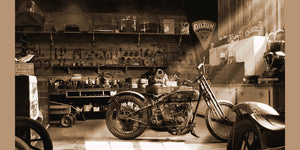Find Competitive Prices on Motocross Parts NZ for every single Bike
Find Competitive Prices on Motocross Parts NZ for every single Bike
Blog Article
Mastering Motorbike Gears: How to Optimize Your Riding Experience
In the realm of motorcycling, understanding the art of gear manipulation is crucial for improving your riding performance. Correctly recognizing and making use of motorcycle equipments can substantially impact control, fuel, and velocity effectiveness, changing a typical adventure into a seamless, exciting trip. By including accurate shift timing and adapting equipment choice to different road problems, motorcyclists can guarantee ideal engine efficiency and safety. The nuances of clutch control, throttle control, and gear auto mechanics beckon a deeper expedition, promising to open the full potential of your maker. How can these techniques be taken advantage of to really maximize your riding experience?
Understanding Gear Mechanics
Exactly how do the intricacies of equipment auto mechanics affect bike efficiency? At the core of motorbike characteristics, equipment technicians play a critical function in converting engine power into activity, ultimately dictating rate and control. Gears, meticulously crafted components, allow bikers to enhance torque and speed, ensuring a smooth change via various surfaces and velocities. The gear ratios, carefully developed, determine the partnership between engine transformations and wheel turns, impacting velocity and fuel efficiency.
Recognizing gear auto mechanics begins with acknowledging the significance of the gearbox, which houses numerous gears of varying dimensions. These gears connect via a procedure known as meshing, where teeth of different gears engage to transfer power. The precision of this interaction is vital; any type of misalignment or damage can result in ineffective power transfer, impeding performance. Additionally, the plan and size of equipments affect the bike's capability to manage different lots and speeds.
Moreover, the principle of equipment moving is indispensable to making the most of performance. Smooth and timely shifts make certain that the engine runs within its optimal power band, stopping unneeded pressure and enhancing longevity (motorcycle parts nz). By comprehending these mechanical ins and outs, cyclists can attain a harmonious blend of power, control, and effectiveness, raising their riding experience
Timing Your Changes
Shift timing mastery is vital for enhancing motorbike performance and improving the riding experience. Correctly timed shifts guarantee that the engine operates within its optimal power band, which is essential for maintaining control, achieving smooth acceleration, and ensuring the long life of the bike. Cyclists need to establish an user-friendly sense of when to shift equipments, which entails comprehending the connection between engine revolutions per min (RPM) and rate.
To grasp shift timing, pay very close attention to the engine's audio and really feel, as these offer vital ideas concerning when to alter gears. The ideal change point generally occurs when the engine comes close to the upper series of its power band without getting to the redline. Shifting prematurely can result in an absence of power, while moving far too late might cause unneeded engine strain
Furthermore, road problems and riding style impact change timing. In city settings, smoother and extra regular changes may be required to browse traffic successfully. In contrast, during freeway riding, fewer shifts at greater speeds can be better. Practicing in diverse atmospheres will certainly enhance your capability to time changes exactly, inevitably elevating your riding experience to an expert degree.
Enhancing Gas Efficiency
While understanding motorcycle gears is important for performance, improving fuel effectiveness is just as crucial for both ecological and economic reasons. Optimum gas consumption not just reduces operational expenses however protective motorbike trousers additionally decreases the ecological footprint of riding. To accomplish this, one need to recognize the intricate relationship in between equipment option and engine efficiency.
To start with, picking the right gear at appropriate speeds can considerably affect fuel usage. Riding in a higher gear at lower speeds can result in engine carrying, which is damaging to both gas economic climate and engine health and wellness. On the other hand, riding in reduced equipments at high rates causes unneeded gas usage. Therefore, preserving an ideal balance by shifting equipments in placement with roadway conditions and anticipated maneuvers is important.
In addition, routine maintenance plays a pivotal duty in fuel efficiency. Ensuring that the bike is well-tuned, with clean air filters and properly blew up tires, can decrease and boost the rules of aerodynamics fuel wastefulness. Taking on a riding style that welcomes progressive acceleration and smooth deceleration can add to much better gas economic climate.
Techniques for Smooth Transitions
Attaining smooth gear shifts is basic to improving the riding experience and making certain the longevity of a bike's transmission system. Proper equipment changing not just adds to a seamless adventure but likewise decreases wear and tear on the mechanical elements. To understand the art of smooth shifts, cyclists must concentrate on a couple of key methods.

Second of all, clutch control plays a crucial duty. Involving and disengaging the clutch efficiently requires practice. The clutch lever should be released gradually, permitting a seamless transfer of power from the engine to the wheels without causing a jolt or abrupt movement.

Adjusting to Road Conditions
Navigating varied roadway conditions is a vital skill for any motorcyclist intending to keep control and security. Whether you're riding on damp surfaces, gravel roadways, or browsing sharp turns, your capability to adapt your equipment use and riding method is critical. Understanding just how to change your gears appropriately can significantly influence traction and security, making sure a safer trip.
In comparison, when riding on gravel or unequal terrain, lower equipments are preferable. Reduced equipments offer far better control and allow you to respond even more swiftly to unforeseen adjustments in the road surface area.
Sharp contours demand exact equipment management to balance rate and control. Downshifting prior to entering a curve can aid maintain momentum additional reading while making sure the motorcycle remains steady throughout the turn. Regular practice in varied problems boosts your ability to react and forecast to changes in road structure and slope.
Verdict
Mastering motorcycle gears substantially improves the riding experience by boosting control, fuel, and acceleration motorcycle performance effectiveness. A complete understanding of equipment technicians and precise shift timing ensures the engine operates within its ideal power band, while smooth shifts with efficient clutch and throttle sychronisation boost comfort and performance. Adapting gear selection to various road problems, such as making use of greater equipments on damp surface areas and lower gears on gravel, more boosts handling and safety and security. Inevitably, these abilities raise the general journey.
Understanding equipment auto mechanics begins with identifying the relevance of the gearbox, which houses numerous gears of varying dimensions. These gears connect with a process recognized as meshing, where teeth of different equipments engage to transmit power (motocross gear). Gentle modifications to the throttle during equipment shifts can stop jerky movements and keep a constant riding rate
Whether you're riding on wet surface areas, gravel roadways, or navigating sharp turns, your capability to adjust your gear use and riding technique is extremely important. Adapting equipment selection to different roadway conditions, such as making use of higher gears on damp surfaces and reduced gears on gravel, more enhances handling and security.
Report this page